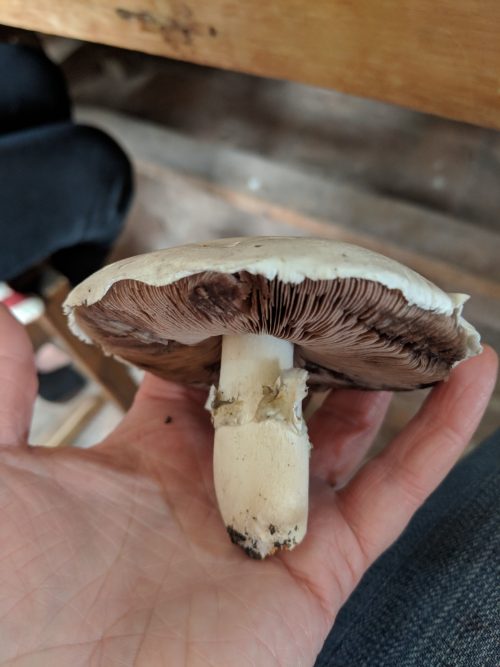Earlier this month, I had the luxury of spending a week in Uruguay, exploring the country’s wines.
Bounded by Brazil and Argentina, the Atlantic Ocean and the Uruguay River, this small South American country is big on flavor. Despite it’s relatively flat terrain—the tallest hill is roughly 1,600 feet high—the wines I tasted we remarkably fresh and full of bright acidity. Even the reds. Especially the country’s signature grape, tannat. In fact, I loved them.
This freshness and acid can be attributed in part to the country’s mild climate, the cooling effects of big winds, and the various wine region’s proximity to the Atlantic Ocean. That ocean also often pushes in mists and rains. It may be that combination of mild weather and moisture that also led more than one winemaker to mention their mushrooms to me.
At De Lucca winery, we were sitting around tasting some pretty wines when, upon discovering my passion for mushrooms, patriarch and winery owner Reinaldo DeLucca excused himself, only to appear a few minutes later with mushrooms plucked fresh from his garden. They were white capped and white stemmed. The young one had faintly pink gills; the larger and older one had brown gills instead.
“What are they?” I asked, reluctant about eating anything I didn’t know. The whole table was watching. Reinaldo shrugged.
“My grandmother ate these,” he said, breaking off a chunk and putting it in his mouth. “I eat them,” he said.

There I was, distrusting of little white mushrooms, and being put in my place by the winemaker. I broke off a piece for myself, nibbled on it—it was mild and good—then discreetly spit it into my napkin when the winemaker’s back was turned. I don’t trust mushrooms I don’t know. Even if Reinaldo was sure if them.
“I haven’t died,” Reinaldo tossed back over his shoulder.
Neither did I. As it turned out, the mushroom was mostly likely the Agaricus bitorquis, a totally edible mushroom.
After that, we were all pointing out Agaricus bitorquis wherever we traveled.
Later, at Alto de la Bellena in the Maldonado region, owner Paula Pivel told me that April—autumn in Uruguay—brings the winemakers boletes in masses. Nearby, at Vina Eden, they find mushrooms too, but haven’t identified the type yet.
It was fun stumbling upon mushrooms, even when I was supposed to be studying the wines. Fun to discover, too, that even on the other side of the world, winemakers are a curious sort, and often drawn to edible mushrooms growing in their backyards. Or, at the edges of their vineyards, as it might be.

Thanks to the great manual